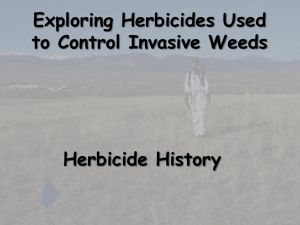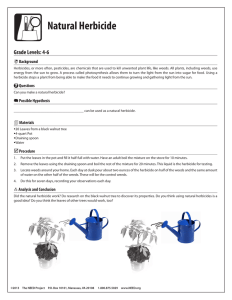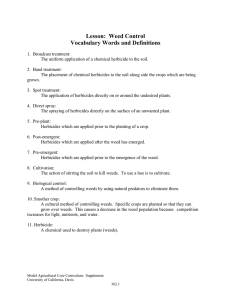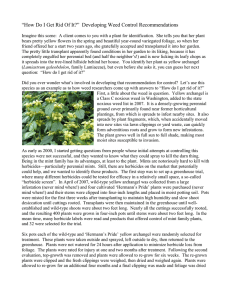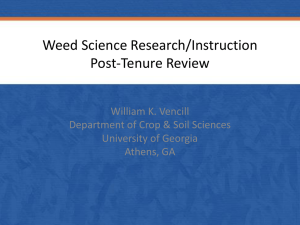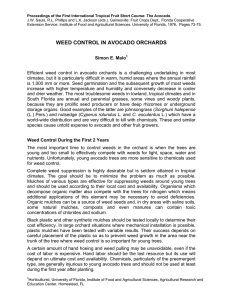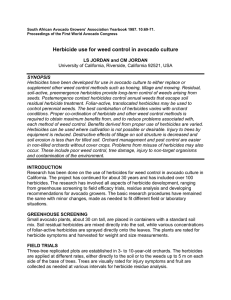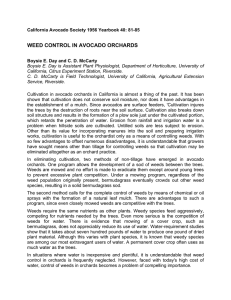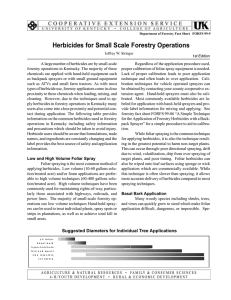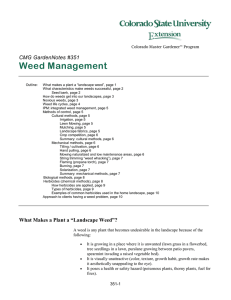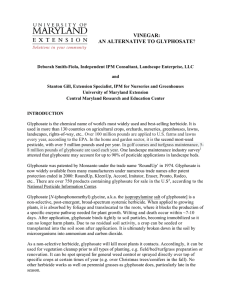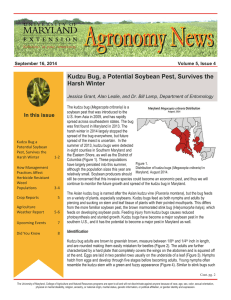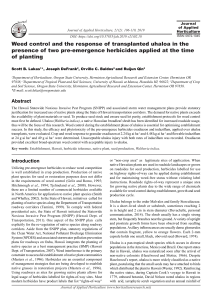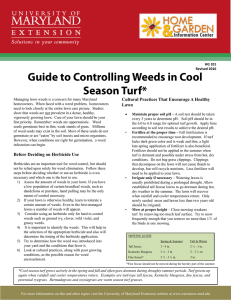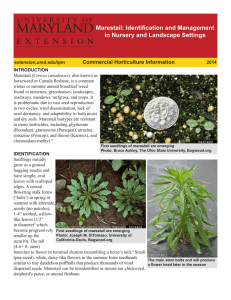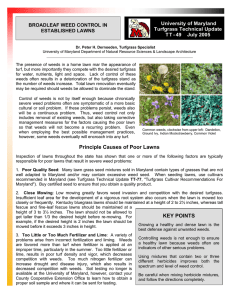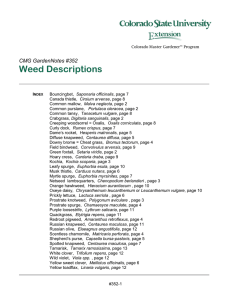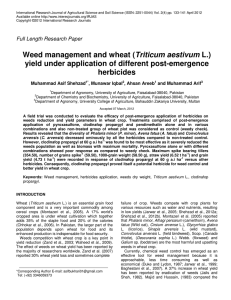1990 Summary of Avocado Research, pages 46-47 Avocado Research Advisory Committee
advertisement
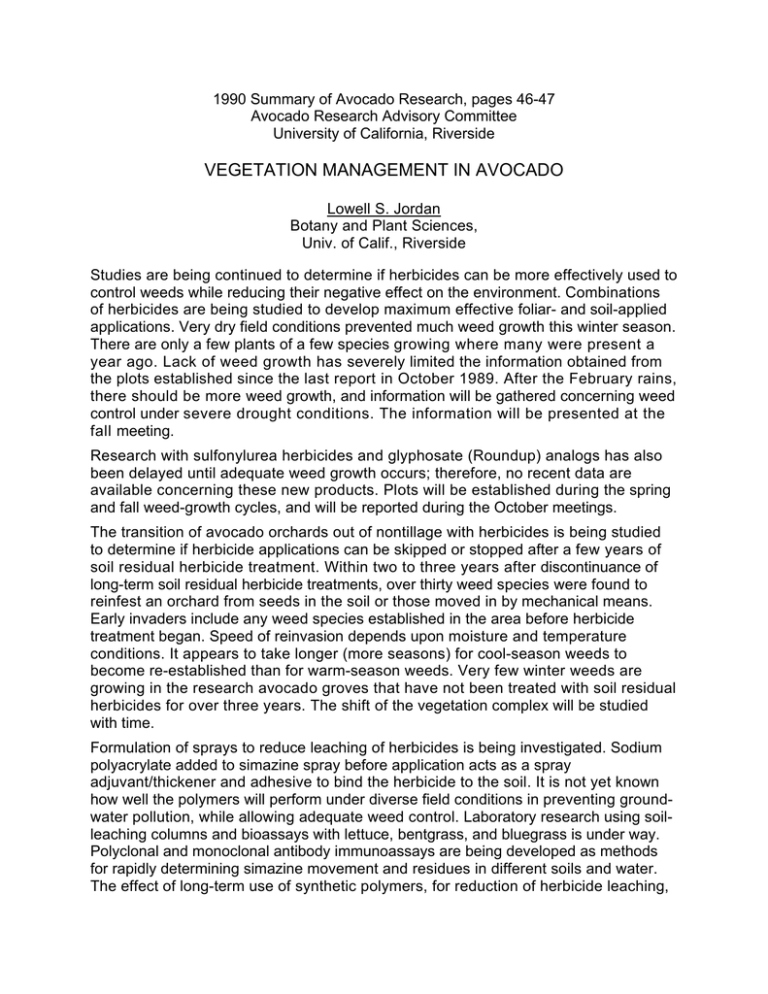
1990 Summary of Avocado Research, pages 46-47 Avocado Research Advisory Committee University of California, Riverside VEGETATION MANAGEMENT IN AVOCADO Lowell S. Jordan Botany and Plant Sciences, Univ. of Calif., Riverside Studies are being continued to determine if herbicides can be more effectively used to control weeds while reducing their negative effect on the environment. Combinations of herbicides are being studied to develop maximum effective foliar- and soil-applied applications. Very dry field conditions prevented much weed growth this winter season. There are only a few plants of a few species growing where many were present a year ago. Lack of weed growth has severely limited the information obtained from the plots established since the last report in October 1989. After the February rains, there should be more weed growth, and information will be gathered concerning weed control under severe drought conditions. The information will be presented at the fall meeting. Research with sulfonylurea herbicides and glyphosate (Roundup) analogs has also been delayed until adequate weed growth occurs; therefore, no recent data are available concerning these new products. Plots will be established during the spring and fall weed-growth cycles, and will be reported during the October meetings. The transition of avocado orchards out of nontillage with herbicides is being studied to determine if herbicide applications can be skipped or stopped after a few years of soil residual herbicide treatment. Within two to three years after discontinuance of long-term soil residual herbicide treatments, over thirty weed species were found to reinfest an orchard from seeds in the soil or those moved in by mechanical means. Early invaders include any weed species established in the area before herbicide treatment began. Speed of reinvasion depends upon moisture and temperature conditions. It appears to take longer (more seasons) for cool-season weeds to become re-established than for warm-season weeds. Very few winter weeds are growing in the research avocado groves that have not been treated with soil residual herbicides for over three years. The shift of the vegetation complex will be studied with time. Formulation of sprays to reduce leaching of herbicides is being investigated. Sodium polyacrylate added to simazine spray before application acts as a spray adjuvant/thickener and adhesive to bind the herbicide to the soil. It is not yet known how well the polymers will perform under diverse field conditions in preventing groundwater pollution, while allowing adequate weed control. Laboratory research using soilleaching columns and bioassays with lettuce, bentgrass, and bluegrass is under way. Polyclonal and monoclonal antibody immunoassays are being developed as methods for rapidly determining simazine movement and residues in different soils and water. The effect of long-term use of synthetic polymers, for reduction of herbicide leaching, on the soil will have to be determined.
